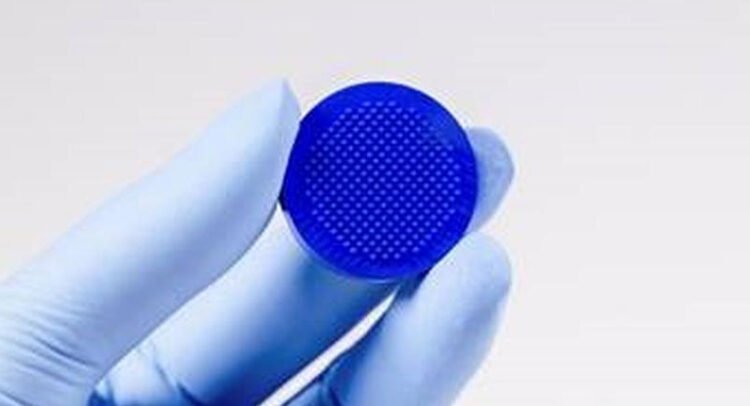Removing space debris with Gecko technology

Gecko-inspired microstructures for switchable adhesion.
Image: INM
– successful tests onboard the ISS –
Thousands of tons of space debris are currently orbiting the Earth, and the number is growing. Most of it is the remnants of completed space missions or decommissioned satellites. The dangerous thing about it is that even centimeter-sized pieces can cause immense damage in a collision with active satellites, spacecraft, and space stations.
Researchers at the Technical University of Braunschweig, in cooperation with the Leibniz Institute for New Materials (INM) in Saarbrücken, have developed a mechanism for “capturing” space debris. This has now been successfully tested under space conditions onboard the International Space Station (ISS).
The particular challenges in gripping space debris are that, on the one hand, conventional suction gripping systems do not work in the vacuum of space and, on the other hand, objects in space do not show cooperative behavior: they tumble, do not send signals and cannot regulate their position and attitude.
Gecko adhesive structures developed at INM, which are fully functional under vacuum conditions, therefore come into question as an innovative gripping system. For docking, scientists from the Institute of Space Systems at TU Braunschweig have implemented a mechanism that can automatically approach a free-floating object.
In late December 2020, U.S. astronaut Victor Glover and, a month later, his colleague Shannon Walker demonstrated the newly developed docking mechanism on the ISS using Gecko adhesion materials provided by INM. NASA-developed Astrobees, small flying robots, were equipped with the new technology. The modified Astrobees were then tested to “grab” space debris.
The gecko technology used in the docking mechanism, which is inspired by the gecko foot’s ability to adhere and detach in a controlled manner, is already used today for so-called handling applications, e.g., in robotics. However, its use in space applications is new. Therefore, various Gecko adhesion materials were also tested onboard the ISS on different surfaces typically installed in spacecraft or satellites, e.g., acrylic glass for solar panels, multilayer insulation as thermal insulation material, and aluminum for the outer skin.
Thus, the knowledge gained now opens up new perspectives for further missions, both in the laboratory and in space.
Wissenschaftliche Ansprechpartner:
Prof. Dr. Eduard Arzt
Wissenschaftlicher Geschäftsführer
Leiter Funktionelle Mikrostrukturen
Tel.: 0681-9300-500
E-Mail: eduard.arzt@leibniz-inm.de
Dr. René Hensel
Stellv. Leiter Funktionelle Mikrostrukturen
Tel: 0681-9300-390
E-Mail: rene.hensel@leibniz-inm.de
Media Contact
All latest news from the category: Physics and Astronomy
This area deals with the fundamental laws and building blocks of nature and how they interact, the properties and the behavior of matter, and research into space and time and their structures.
innovations-report provides in-depth reports and articles on subjects such as astrophysics, laser technologies, nuclear, quantum, particle and solid-state physics, nanotechnologies, planetary research and findings (Mars, Venus) and developments related to the Hubble Telescope.
Newest articles

Silicon Carbide Innovation Alliance to drive industrial-scale semiconductor work
Known for its ability to withstand extreme environments and high voltages, silicon carbide (SiC) is a semiconducting material made up of silicon and carbon atoms arranged into crystals that is…

New SPECT/CT technique shows impressive biomarker identification
…offers increased access for prostate cancer patients. A novel SPECT/CT acquisition method can accurately detect radiopharmaceutical biodistribution in a convenient manner for prostate cancer patients, opening the door for more…

How 3D printers can give robots a soft touch
Soft skin coverings and touch sensors have emerged as a promising feature for robots that are both safer and more intuitive for human interaction, but they are expensive and difficult…





















